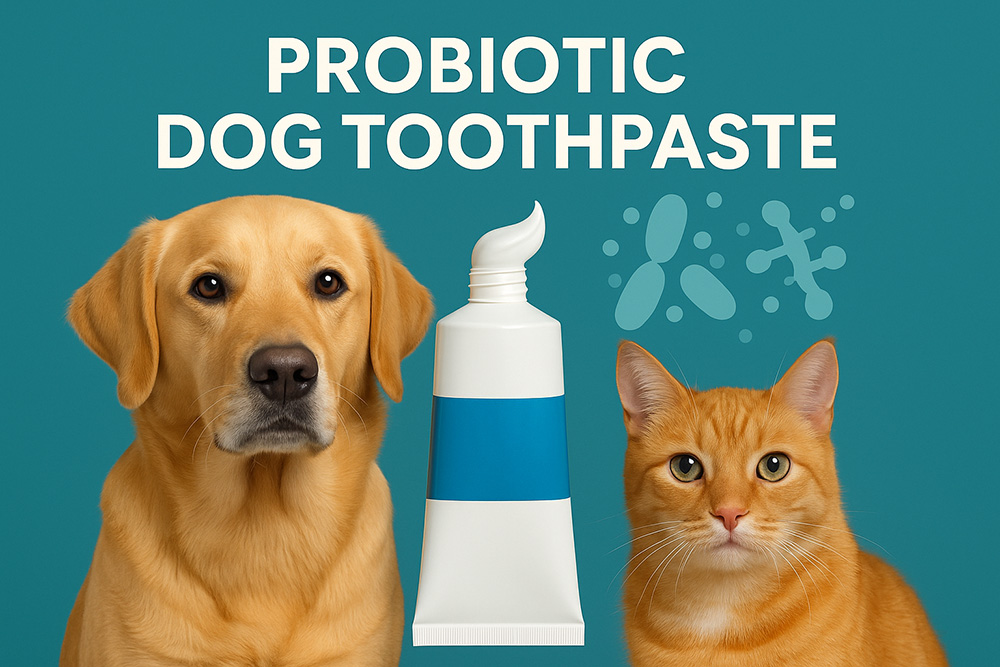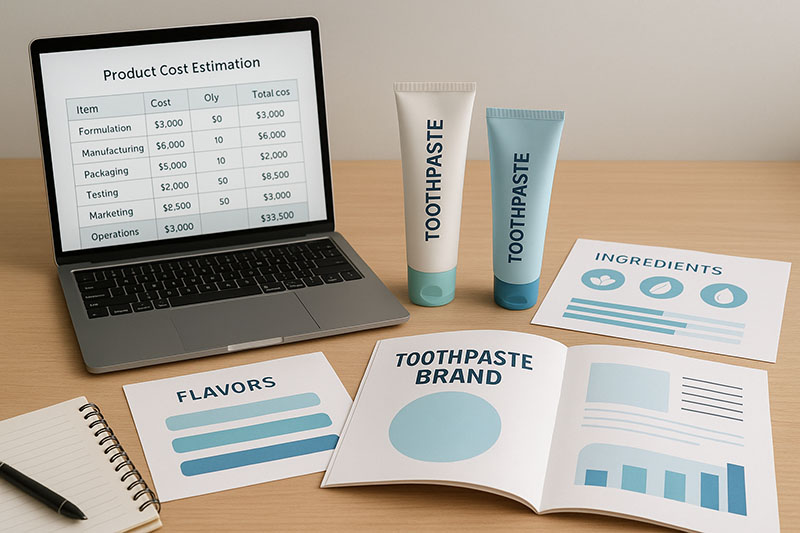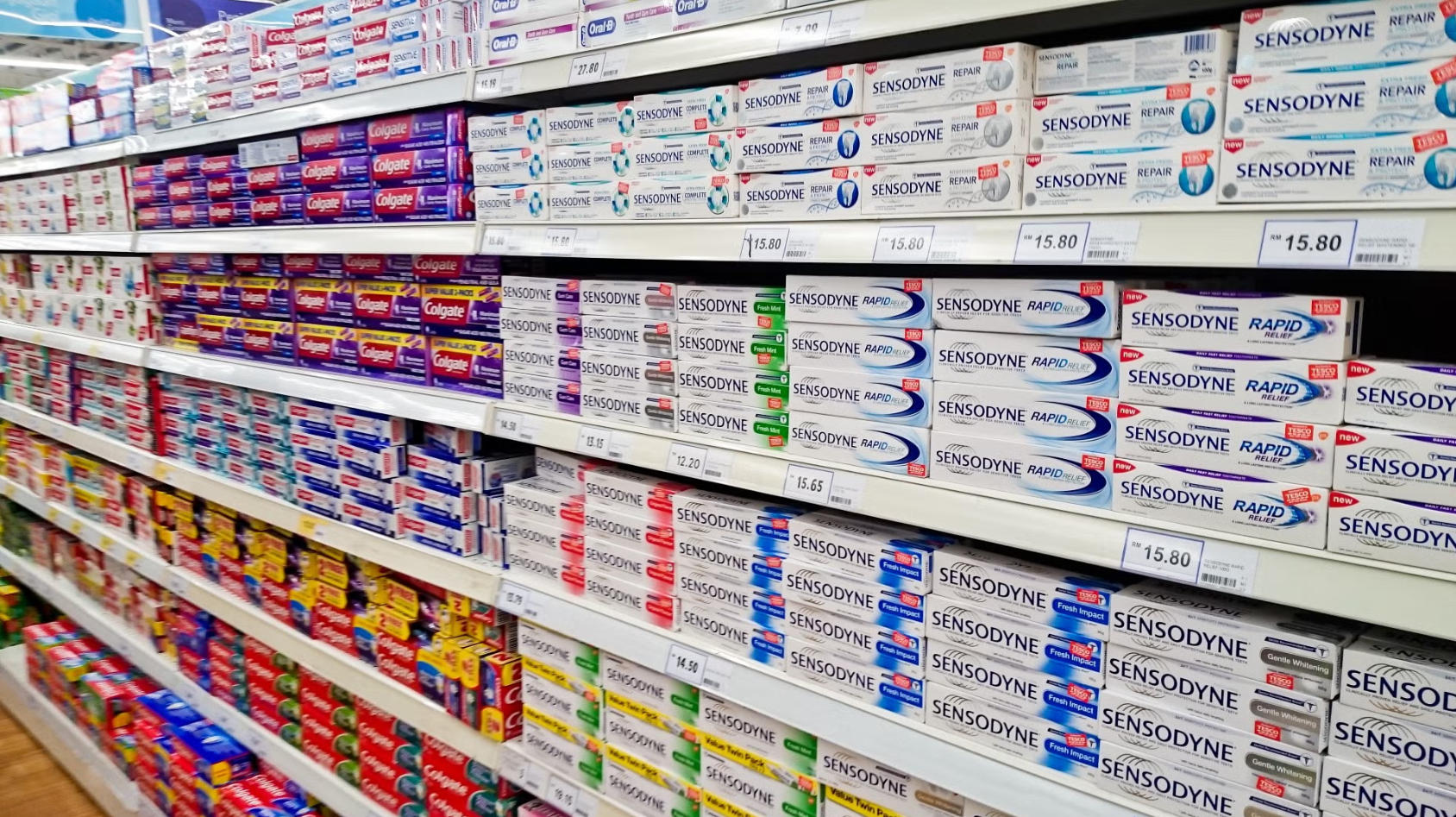Probiotic Dog Toothpaste: Formulation Science, Safety & VOHC
Summary
Why it matters: Periodontal disease is one of the most common conditions in dogs, and malodor (VSCs) is tightly linked to dysbiotic plaque—making at-home toothbrushing a high-impact intervention for pet families.
What works: “Probiotic” and “postbiotic” approaches can support plaque management and fresh breath when paired with regular brushing; evidence in humans is stronger, and companion-animal data are emerging—so design your claims and trials carefully.
How to build it: Choose a water-restricted base, protect viable cells (or use stable postbiotics), keep abrasivity gentle, avoid xylitol, and validate with in-home studies aligned to VOHC-style endpoints.
Seal the deal: Understand what the Veterinary Oral Health Council (VOHC) looks for; toothpastes are explicitly within its accepted categories, and products like Petsmile have earned acceptance.
1) The problem space: canine oral health
Most dogs develop some level of periodontal disease by age two to three; small breeds are at higher risk. That’s why consistent mechanical plaque control (brushing) and evidence-based home-care formulations matter.
The canine oral cavity hosts a microbiome quite different from humans across niches (plaque, saliva, mucosa), so strain/ingredient selection and claims shouldn’t be copy-pasted from human products.
Halitosis in dogs is largely driven by volatile sulfur compounds (VSCs) produced by anaerobes in periodontal disease—making biofilm management and tongue/coating considerations central to product design and usage directions.
2) Probiotics vs. postbiotics in dog toothpaste
Probiotics (live microbes conferring a benefit) and postbiotics (inactivated microbes and/or their metabolites with documented benefits) are two viable routes:
Human dental data suggest certain oral probiotics (e.g., Streptococcus salivarius K12/M18) can modulate halitosis and plaque, but results vary and often depend on tongue-coating control; do not over-promise.
Companion-animal data are early but promising; small pilot work has explored multi-strain blends for dogs and cats, underscoring the need for robust, blinded, in-home canine trials before strong marketing claims.
Takeaway for brands: Use probiotics/postbiotics to support plaque management and breath freshness alongside brushing—not as a standalone “cure.”
3) Claim strategy that won’t bite you later
Stay support-oriented: “Helps control plaque,” “supports fresh breath,” “promotes a healthy oral environment.” Avoid disease-treatment wording (that could push you into animal drug territory under FDA/CVM).
Consider VOHC alignment: VOHC evaluates effectiveness for plaque/tartar control across categories including Water Additive, Oral Gel, Spray & Toothpaste. Designing studies to VOHC norms makes your marketing more defensible, and yes—toothpastes are on the accepted list (e.g., Petsmile).
Remember the framework: For ingested/ingestible products, FDA expects safe, sanitary production and truthful labeling, with many states following AAFCO-modeled rules. There’s no separate “animal cosmetic” category at FDA—therapeutic claims make a product a drug.
4) Formulation architecture: three proven routes
Route A — Waterless postbiotic gel (maximum stability)
Concept: Replace live cells with a postbiotic (e.g., spray-dried fermentation lysate) to reduce stability headaches while preserving bioactive benefits.
Typical skeleton (for R&D prototyping, adjust to your raws/specs):
Humectants (e.g., glycerin, sorbitol 70%): 45–60%
Low-abrasivity hydrated silica: 10–20%
Rheology modifiers (colloidal silica/cellulose gum): 2–4%
Postbiotic powder: 0.5–2%
Palatants (chicken/beef/liver), natural: 0.3–0.8%
Water: ≤5% (target low a_w)
Preservatives: challenge-tested for the system
Pros: Shelf-stable, simpler QC; no CFU label required.
Watchouts: Validate palatability and stain resistance; run plaque-index and VSC endpoints.
Route B — Low-water probiotic paste (microencapsulated)
Concept: Deliver viable CFUs while minimizing moisture and oxygen; use lipid or alginate microcaps to protect cells in processing and storage.
Adds/changes vs. Route A:
Encapsulated probiotic(s): target 10⁷–10⁹ CFU per use at end-of-shelf-life; overage based on your real-time/accelerated loss curves.
Tighter process windows: low shear, <45 °C during make-down; nitrogen blanket; metal-ion control.
Pros: “Live” story resonates with consumers.
Watchouts: CFU attrition, distribution uniformity, transport heat spikes.
Route C — Hybrid “probiotic + postbiotic + mild enzyme”
Concept: Combine a live strain for biofilm competition, a postbiotic for resilience, and gentle enzymes (e.g., glucose oxidase/lactoperoxidase) for hygiene support.
Pros: Layered mode-of-action and label story.
Watchouts: Compatibility (peroxide-generating systems vs. probiotic survival), careful sequencing, and packaging barrier.
Non-negotiable safety note: Never use xylitol (aka birch sugar) in dog products; it’s toxic to dogs even in small amounts. Train procurement and production to prevent cross-contamination.
5) Abrasivity, flavor, and user experience
Gentle abrasives (hydrated silica grades) help remove plaque films without scratching enamel; calibrate with in-house brushing rigs and vet feedback.
Palatants (meat flavors) lift acceptance; keep mint notes minimal—mint ≠ “clean” to dogs.
Rheology matters: aim for a cohesive ribbon that sits on the brush and spreads easily in 60–90 seconds of brushing.
6) Packaging & stability by design
Choose high barrier tubes (EVOH or aluminum-laminate), or airless pumps to minimize oxygen/moisture ingress and household “back-contamination.”
Use accelerated (e.g., 40 °C/75% RH) and real-time programs to build CFU loss curves (if live strains) and verify postbiotic/enzyme activity; include full preservative challenge for mixed systems.
If viable CFUs are claimed, set release specs at end-of-life and document your overage rationale.
7) Regulatory & labeling checklist (U.S. focus)
Intended use dictates status. Treatment/prevention claims → animal drug (CVM). Supportive hygiene claims with ingestion → typically regulated as animal food and must be safe, sanitary, and truthfully labeled; states often follow AAFCO models.
VOHC: While VOHC is not a regulator, its Seal of Acceptance for plaque/tartar control is a powerful trust anchor. Toothpastes are in-scope and several are listed, including Petsmile.
No “animal cosmetic” lane at FDA. Non-medicated grooming aids aren’t separately regulated; therapeutic intent makes a product a drug.
Xylitol: absolute do-not-use in any dog oral care.
8) Evidence plan you can execute
Design a blinded, randomized, in-home study in pet households:
Population: ≥60 dogs, mixed breeds/sizes; exclude recent dentals/antimicrobials.
Arms: Test toothpaste vs. matched-base control (optional third “no brushing” observational arm).
Duration: 8–12 weeks, once-daily brushing protocol with standardized brush.
Primary endpoints: Plaque index and percent coverage (scored by trained, blinded assessors).
Secondary endpoints: Owner-reported breath freshness, VSC measurements (portable sulfide monitor), calculus index, and compliance data.
Stats: Pre-registered analysis, ≥80% power; stratify by size/age.
Align your SOPs and data capture to VOHC-style methodology to facilitate future submission.
9) Compliant label copy
Front: “Helps control plaque & supports fresh breath when used with daily brushing.”
Back: “Formulated with [probiotic/postbiotic] to promote a healthy oral environment. No xylitol. For dogs only. Not a treatment for disease. For best results, brush daily and schedule regular professional cleanings.”
Directions: “Apply a pea-sized amount to a pet toothbrush or finger brush. Brush gently for 60–90 seconds. Do not rinse.”
Quality notes: “Manufactured under food-grade GMPs. End-of-shelf-life CFU target: [X CFU/g]” (if applicable).
Try Lidercare Now!
We Help You Launch New Products, And Continue To Grow. Try Us With 20% Off Your First Order!
10) Sample R&D starting formulae (for lab prototyping)
A. Waterless postbiotic gel (stable)
Glycerin 40–45% · Sorbitol 70% 10–15% · Hydrated silica 12–18% · Colloidal silica 2–3% · Postbiotic powder 0.8–1.2% · Flavor 0.4–0.7% · Preservative q.s. · Water ≤5%
B. Low-water probiotic paste (microencapsulated)
As above, plus encapsulated probiotic providing 10⁷–10⁹ CFU per daily use at end-of-life; adjust humectant balance to keep a_w low; nitrogen purge; fill ≤25 °C.
C. Hybrid with mild enzyme system
Add glucose oxidase/lactoperoxidase at low levels; verify compatibility with probiotic survival and target pH/rheology.
Safety banner: Zero xylitol. Label alternative sweeteners/flavor systems clearly and validate voluntary intake.
11) Common pitfalls
Using xylitol or birch sugar—even trace carryover—can be catastrophic. Lock down suppliers and implement “xylitol-free facility” SOPs.
Copying human claims into pet—species biology and regulations differ. Align to pet-specific evidence and FDA/CVM/AAFCO expectations.
Skipping in-home validation—kennel or lab outcomes don’t always predict real-world brushing. Build your own data package aligned to VOHC-style endpoints.
FAQs
Q1: Are “live” probiotics required, or can I use postbiotics?
A: Postbiotics are a strong stability play and can support oral-environment claims; if you use live cells, protect them (microencapsulation, low-water base) and substantiate end-of-life CFUs with stability data.
Q2: Can I claim to treat gingivitis or periodontal disease?
A: Not without drug approval. Keep claims supportive (plaque, breath) and consider VOHC submission for third-party credibility.
Q3: Which ingredients must I absolutely avoid?
A: Xylitol is non-negotiable (toxic to dogs). Also avoid harsh peroxides/oxidizers that can destabilize probiotics or irritate mucosa; validate abrasives for gentle cleaning.
Q4: Does VOHC acceptance matter to consumers?
A: The VOHC Seal signals a product has met recognized effectiveness standards for plaque/tartar control in pets—useful both for veterinarians and informed pet parents.
About us
Lidercare partners with pet brands worldwide to develop evidence-driven dog toothpaste—from probiotic/postbiotic screening and stability programs to in-home trials and VOHC-aligned study design. We operate under food-grade GMPs, are experienced in xylitol-free facilities, and offer full ODM support (flavor, packaging, and regulatory review).
Table of Contents
Awesome! Share to:
Latest Blog Posts
Check out the latest industry trends and take inspiration from our updated blogs, giving you a fresh insight to help boost your business.




